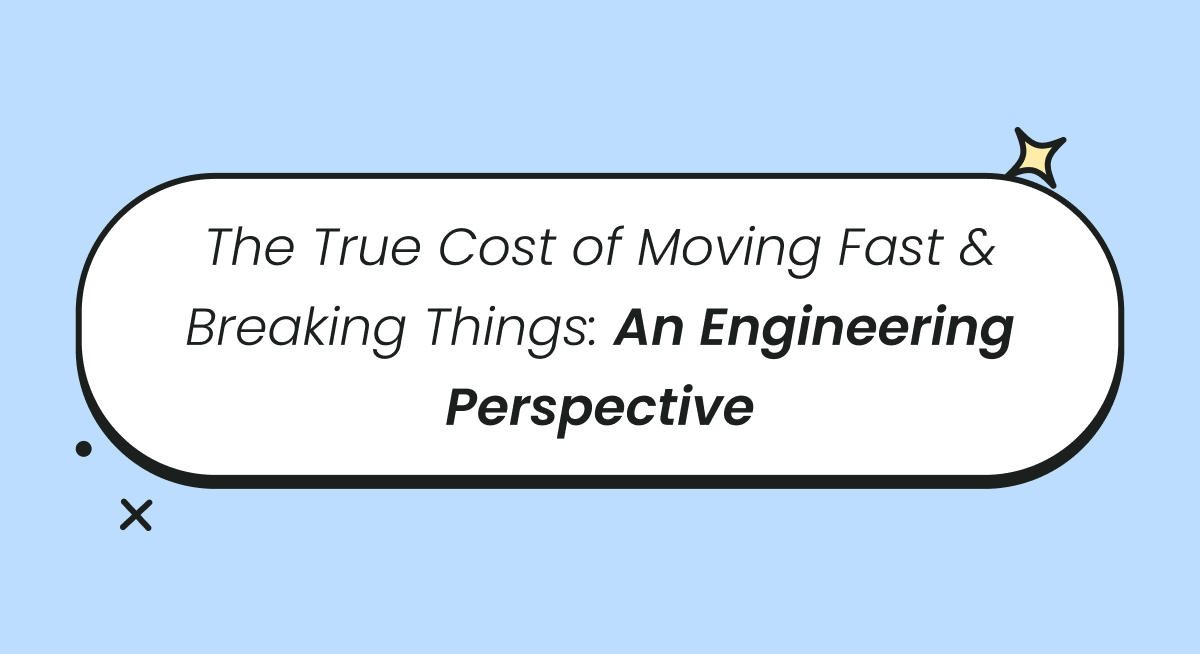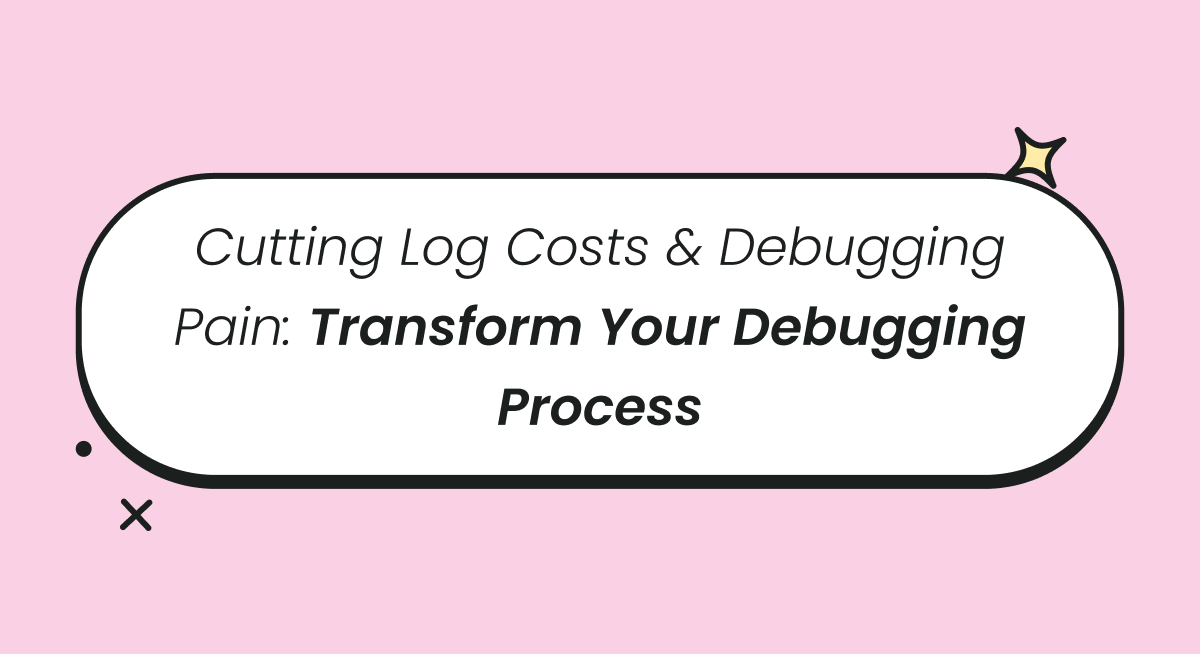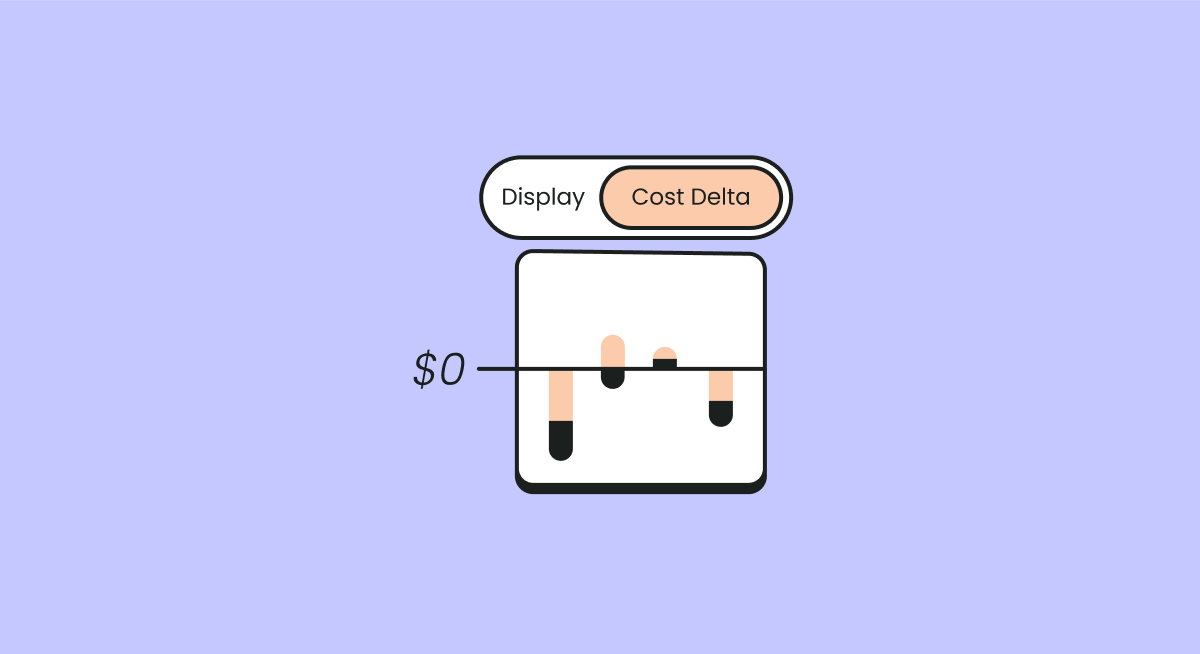
What Is AWS Cost Optimization?
AWS cost optimization is the practice of managing and reducing cloud expenditures while maintaining performance and capacity. It involves analyzing your AWS usage and identifying areas where you can save costs without compromising the functionality of your applications.
This can be achieved through various strategies, such as selecting the appropriate instance types, using discounted pricing models like reserved instances and spot instances, and using tools and services to automate cost optimization.
This is part of an extensive series of guides about IaaS.
4 Reasons to Optimize Costs on AWS
For organizations heavily invested in AWS, cost optimization is becoming a critical activity, especially when it comes to AWS FinOps. Here are four reasons organizations are prioritizing cost management:
- Reduce unnecessary spending: By optimizing costs, organizations can avoid paying for unused or underutilized resources, ensuring that funds are spent efficiently. This allows for better allocation of the budget to other critical areas.
- Improve financial planning: Cost optimization enables more accurate forecasting and budgeting, helping organizations plan their finances with greater precision. Predictable costs facilitate better strategic decisions and investment in innovation.
- Enhance competitiveness: Lower operational costs can give organizations a competitive edge by allowing them to offer services at more competitive prices or invest more in improving their offerings.
- Increase scalability and flexibility: Optimizing costs ensures that organizations can scale their operations up or down without incurring prohibitive expenses. This flexibility is crucial for adapting to market demands and supporting growth.
Pillars of AWS Cost Optimization

Right-Sizing
Right-sizing involves matching your instance types and sizes to your actual workload requirements. This process helps in avoiding over-provisioning, which can lead to unnecessary costs, and under-provisioning, which can affect performance. AWS Compute Optimizer is a free tool that provides basic recommendations based on your usage patterns.
Increasing Elasticity
Elasticity in AWS means dynamically adjusting resource capacity to match the current demand. Implementing auto-scaling policies allows you to scale your infrastructure up during peak times and down during off-peak times. This ensures that you only pay for what you need, reducing costs associated with maintaining excess capacity.
Using the Right Pricing Model
AWS offers various pricing models, such as on-demand, reserved instances, and spot instances, each suited for different use cases. On-demand instances provide flexibility without long-term commitment, while reserved instances offer significant discounts for predictable workloads. Spot instances, available at steep discounts, are suitable for non-critical or flexible workloads that can tolerate interruptions.
Storage Optimization
Optimizing storage involves selecting the appropriate storage class based on access frequency and performance requirements. AWS offers multiple storage classes, including S3 Standard, S3 Infrequent Access, and S3 Glacier for archival. By using lifecycle policies, you can automatically transition data to lower-cost storage tiers as it ages, reducing storage costs.
Continuous Monitoring and Improvement
Continuous monitoring and improvement involve regularly reviewing and analyzing your AWS usage and spending. Tools like AWS CloudWatch and AWS Cost Explorer provide insights into usage patterns and cost trends. Implementing a culture of continuous improvement ensures that cost optimization measures are regularly updated and refined to adapt to changing business needs and AWS offerings.
6 Free AWS Cost Optimization Tools
AWS offers some native tools that aid in cost optimization.
1. AWS Cost Explorer
Cost Explorer provides insights into your AWS usage and expenditure patterns. It offers an intuitive interface that helps visualize and analyze cost and usage data over various timeframes, such as daily, monthly, and yearly.
With Cost Explorer, you can create custom reports that break down costs by service, linked account, and usage type. It also supports tagging, which allows you to categorize and track costs associated with different projects or departments, making it easier to allocate expenses and manage budgets.
Source: AWS
2. AWS Budgets
AWS Budgets provides the ability to set custom cost and usage thresholds. You can create alerts based on actual costs or usage, as well as forecasted costs and usage. This feature ensures you are notified before you exceed your set budgets, allowing you to take corrective actions in a timely manner.
The tool supports various budget types, including cost budgets to monitor spending, usage budgets to track resource consumption, and reservation budgets to manage reserved instance utilization. AWS Budgets also integrates with Cost Explorer, allowing users to visualize budgets while viewing AWS costs.
Source: AWS
3. AWS Cost Optimization Hub
The AWS Cost Optimization Hub serves as a centralized platform that aggregates resources, best practices, and tools to help optimize your AWS spending. The hub features documentation that covers a range of cost optimization topics, from basic principles to advanced strategies.
It also includes tutorials and webinars led by AWS experts, providing practical guidance on implementing cost-saving measures. Additionally, the hub shows customer success stories, which are real-world examples of how other organizations have reduced their AWS costs.
Source: AWS
4. AWS Cost Anomaly Detection
Cost Anomaly Detection uses advanced machine learning algorithms to automatically identify and alert you to unusual spending patterns in your AWS account. This tool continuously monitors cost and usage data, detecting anomalies that could indicate unexpected or unauthorized usage.
When an anomaly is detected, you receive alerts that include information about the nature of the anomaly, affected services, and potential causes. This prompt notification allows you to quickly investigate and address the issue, preventing costly surprises on your AWS bill. The tool also provides historical analysis, helping you understand long-term trends.
Source: AWS
5. AWS Pricing Calculator
Pricing Calculator helps you estimate the costs of AWS services based on organization-specific requirements. The calculator provides a detailed breakdown of costs, allowing you to model different architectural scenarios and understand their financial implications.
You can input your anticipated usage levels, select specific AWS services, and configure options such as instance types, storage volumes, and data transfer amounts. The tool then calculates the estimated monthly and annual costs. The pricing calculator can also save and share calculations, making it easier to collaborate with team members and stakeholders.
Source: AWS
6. AWS CUDOS
AWS Cost and Usage Report (CUDOS) provides comprehensive insights into your AWS costs and usage. This tool offers a detailed view of your spending, breaking down costs by service, usage type, and region. By integrating with other AWS tools, CUDOS enables you to analyze historical data, identify trends, and uncover opportunities for cost savings.
CUDOS supports advanced reporting capabilities, allowing you to create custom dashboards and visualizations tailored to your business needs. These insights help you understand the drivers of your AWS costs and make informed decisions to optimize resource usage and reduce expenses.
Source: AWS
Related content: Read our guide to AWS cost optimization tools
10 Cost Optimization Hacks to Cut Your AWS Bill
Here are some of the ways that you can optimize your AWS costs.
1. Explore Your Bills and Apply Cost Allocation Tags
Before you can optimize costs, you need to understand the cloud bill in detail. Start with the AWS Billing and Cost Management dashboard, which provides a comprehensive view of your expenses. It allows you to break down costs by service, region, and linked account, giving a granular view of where most spending is occurring.
Use cost allocation tags to categorize expenses by project, department, or application, allowing for more precise tracking and accountability. These tags help in associating costs with business units, making it easier to allocate expenses and manage budgets. Regularly reviewing the bill helps you spot anomalies and trends, and then implement targeted cost-saving measures.
2. Choose the Right Region
AWS offers multiple regions worldwide, each with different pricing structures. By selecting a region closer to the user base, you can reduce latency and improve the overall performance of your applications. Additionally, consider the pricing differences between regions; sometimes, neighboring regions may offer lower rates for the same services.
Evaluate data transfer costs; inter-region data transfers can incur additional charges. For example, transferring data between North America and Europe can be more expensive than transferring data within the same continent. An informed choice of AWS region helps balance cost considerations with performance, compliance, and data sovereignty requirements.
3. Perform Right-Sizing
Right-sizing AWS instances involves matching instance types and sizes to the workload requirements to avoid over-provisioning and under-utilization. Regularly monitor the performance and utilization of instances using AWS CloudWatch. For underutilized instances, consider downsizing them to more cost-effective options. For instances that consistently exceed their capacity, upgrading to larger instances can maintain performance and avoid bottlenecks.
Use AWS Compute Optimizer, which provides recommendations based on your usage patterns, to make informed decisions about instance right-sizing. This tool analyzes historical data to suggest the most suitable instance types and sizes. Periodically review your instance configurations to ensure they align with changing workload requirements.
4. Implement Auto Scaling Policies
Kubernetes supports policies that automatically adjust the number of running instances based on an application's demand, ensuring you only pay for the capacity you need. Define scaling policies that specify conditions for scaling in and out, such as CPU utilization, request count thresholds, or custom CloudWatch metrics.
By dynamically scaling resources, you can handle traffic spikes without maintaining excess capacity during low-demand periods. For example, during peak hours, auto scaling can increase the number of instances to handle increased traffic, while during off-peak hours, it can scale down to minimize costs.
5. Create Schedules to Turn Off Unused Instances
Unused instances running during non-peak hours contribute to unnecessary costs. Implementing schedules to automatically turn off instances when not in use can lead to significant savings. Use AWS Instance Scheduler or AWS Lambda functions to create start and stop schedules for development, testing, and non-critical production instances.
By aligning instance availability with usage patterns, you ensure resources are only active when needed. For example, development instances can be turned off during nights and weekends when they are not being used. Additionally, consider integrating with your CI/CD pipeline to start instances only when a deployment or test is triggered.
6. Identify and Delete Orphaned Snapshots
Orphaned snapshots, which are not associated with any active volumes, can accumulate and incur unnecessary storage costs over time. Regularly audit your Amazon EBS snapshots to identify these orphaned snapshots. Use AWS tools like the AWS Management Console, AWS CLI, or AWS SDKs to list and review your snapshots.
Once identified, delete the orphaned snapshots to free up storage space and reduce costs. Implementing a policy for regular snapshot audits helps maintain a lean storage environment. Additionally, consider automating this process using AWS Lambda and CloudWatch Events to periodically check for and delete orphaned snapshots.
7. Use Compute Savings Plans
Compute savings plans offer flexible pricing models for AWS compute usage, including Amazon EC2 and AWS Fargate. Commit to a consistent amount of usage measured in USD per hour over a one or three-year term to receive reduced rates. Unlike reserved instances, compute savings plans automatically apply savings across any region, instance family, or operating system.
For example, if your usage patterns change or you migrate workloads to different regions, these plans continue to provide savings without the need for manual adjustments. Regularly review your compute usage and adjust your commitment levels to align with your current requirements.
8. Use Spot Instances for Flexible Workloads
EC2 spot instances allow you to bid on unused EC2 capacity at discounts of up to 90% compared to on-demand rates. They are suitable for fault-tolerant and flexible workloads such as big data analysis, batch processing, CI/CD jobs, and stateless web servers.
While spot instances can be interrupted at two minutes’ notice, using them in combination with auto scaling groups and Spot Fleet can improve resilience. Spot Fleet allows you to manage a collection of spot instances and maintain the desired capacity by automatically replacing interrupted instances. Use AWS Step Functions to orchestrate workflows that can handle interruptions gracefully, ensuring continuity and cost efficiency.
9. Use or Sell Underutilized Reserved Instances
If you have underutilized reserved instances, consider modifying or exchanging them to better match your current needs. AWS allows you to change the instance size within the same instance family to optimize usage.
For example, if your application requirements have decreased, you can convert larger instances into smaller ones to avoid wastage. Additionally, you can sell unused RIs on the AWS Reserved Instance Marketplace to recoup some costs. The marketplace enables you to list your RIs for sale, allowing other AWS customers to purchase them.
10. Charge Back Amazon Costs to Internal Users
Implement a chargeback model to allocate AWS costs to different departments, projects, or teams within your organization. Using AWS Organizations and consolidated billing, you can create a detailed breakdown of costs by linked account or cost allocation tags.
The Enterprise Billing Console allows you to track and report usage and expenses accurately, encouraging accountability and cost-conscious behavior. Internal users become more aware of their consumption patterns, driving better resource utilization and cost optimization. Additionally, regular financial reviews and reports can highlight areas for improvement.
AWS Cost Optimization Made Easy with Finout
Finout's FinOps solution is particularly adept at managing AWS costs, including those associated with Amazon Elastic Kubernetes Service (EKS), making it an excellent tool for organizations leveraging AWS's extensive cloud services. It facilitates real-time cost allocation and reassignment across the entire AWS infrastructure, which is pivotal for companies with intricate and dynamic cloud environments.
See Additional Guides on Key IaaS Topics
Together with our content partners, we have authored in-depth guides on several other topics that can also be useful as you explore the world of IaaS.
FinOps
Authored by Finout
- Top 12 FinOps Tools to Consider in 2024
- AWS FinOps: Why, How, and 6 Tools to Get You Started
- What is Azure FinOps and How You Can Adopt It
AWS ECS
Authored by Lumigo
- AWS ECS vs. EKS: 5 Key Differences and How to Choose
- AWS ECS: Understand Launch Types, Service Options & Pricing
- AWS ECS Tutorial: Creating Your First ECS Cluster
AWS FSx
Authored by NetApp








